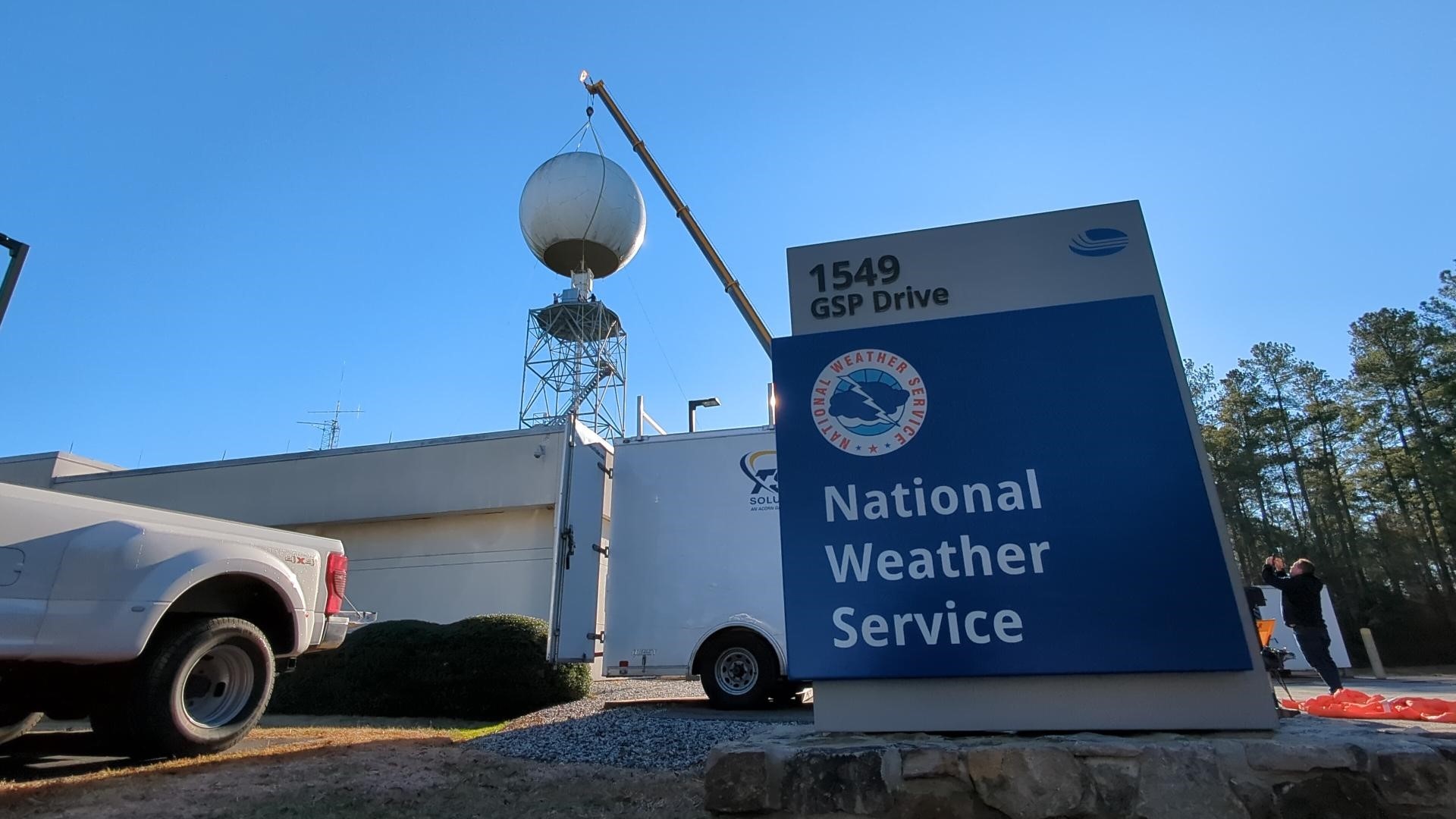GREER, S.C. — Weeks after the weather radar first broke, repairs began today at the National Weather Service Greenville-Spartanburg, the local office that protects Charlotte and western North Carolina.
Designed in the 1980s and constructed through the 90s, the radars monitoring the weather across the Carolinas are aging – and with age, comes breakdown.
Trisha Palmer, the Warning Coordination Meteorologist at NWS GSP, says it best: “Just like your car needs repairs after running for a long time, this radar has been what we call turnin' and burnin' for 27 years, and eventually, parts fail.”
The federal government is spending an estimated $135 million to keep the current generation of weather radars operational through 2035. To do that, the radar is taken offline, and parts are replaced. While inconvenient, these planned outages are preventative in nature. Without them, a radar could break without warning.
Palmer explains the radar was already scheduled to be fixed, but it went down at the end of December. 27 years after it was first installed, a gear broke on Dec 31. Without the gear, the radar could not spin. And without spin, the radar could not scan the skies.
A crane began the delicate process of disassembling the radar today. Inside crews will replace the pedestal, a mount that spins the radar dish. The 15-thousand-pound mount had literally ground away the broken gear.
This has been an issue for northeast Georgia and the western Carolinas due to multiple severe weather events since then.
Why is radar so important to us?
The GSP radar in upstate South Carolina is the closest full-power National Weather Service radar to Charlotte. When it went offline, there was no choice but to use neighboring radar sites. Like your own vision, the further away something is, the harder it is to see. The same is true for weather radars.
Radars work by transmitting a radio signal at multiple levels of the atmosphere. Like listening to a distant radio station in your car, the further away from the transmitter you are, the more degraded the signal becomes.
And while rain has continued to show up here on television and in your favorite weather app, you have to look really hard to see what we’re missing.
The repairs at GSP are expected to take at least a week and cost roughly a million dollars. Once crews are finished here, they will travel to all the other radar sites in the Carolinas to repeat similar repairs.
The National Weather Service says yearly the cost each taxpayer about $3 in public services.
Contact Brittany Van Voorhees at bvanvoorhe@wcnc.com and follow her on Facebook, Twitter and Instagram.

